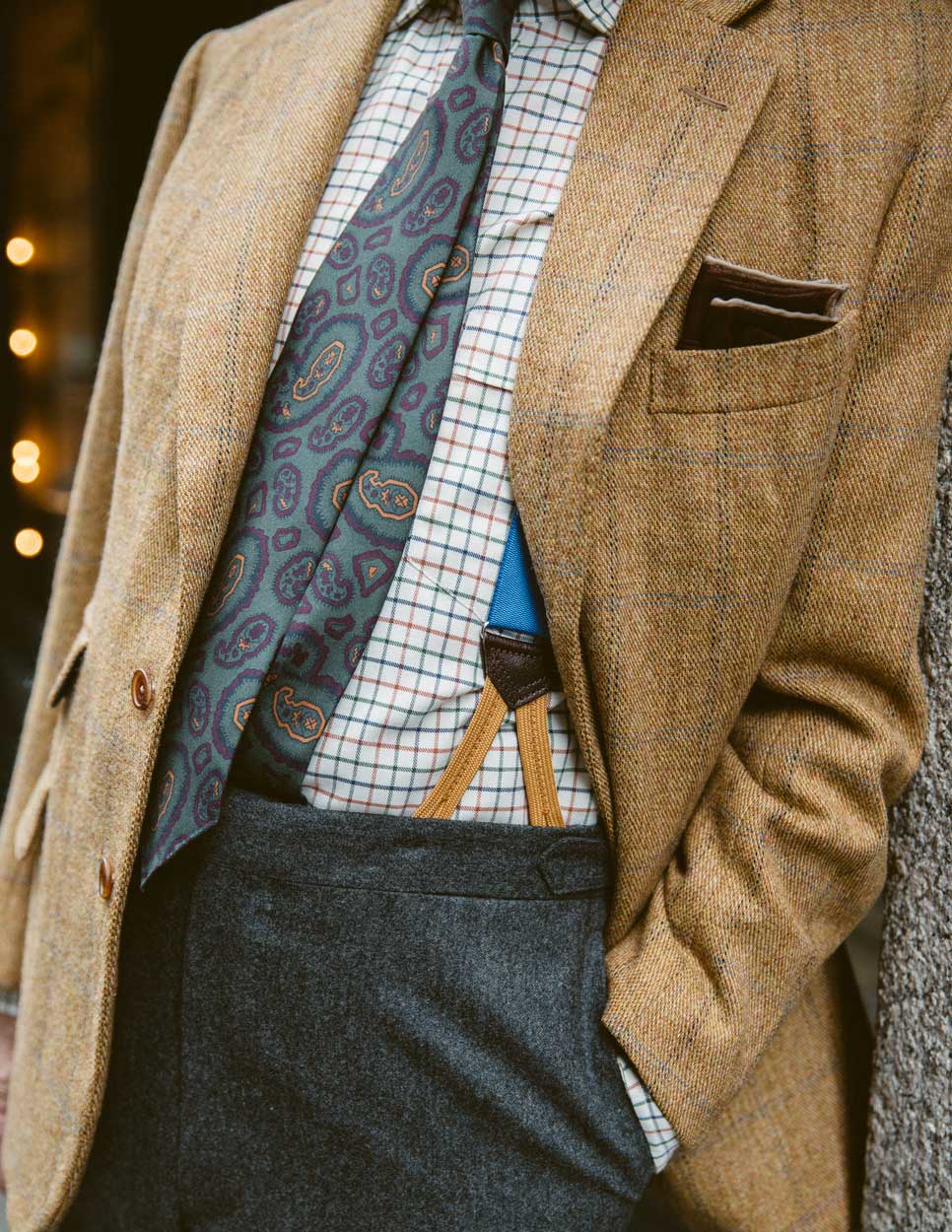2018ClothingShirts
Checks, Please: The Return of the Tattersall Shirt
By G. Bruce Boyer
Jul 13, 2022

Whether running about town, or spending a leisurely day in the country, the tattersall shirt never disappoints in the style stakes. G. Bruce Boyer applauds the enduring check motif.
Is there a more English shirt than a rustic tattersall? Not in my book there isn’t. It’s the perfect accompaniment to porridge-thick tweed sports jackets and cashmere ties, Scottish sweaters and corduroy trousers, jeans and desert boots. The perfect shirt for prowling ‘round the estate, even if the estate’s only a small apt in the city. Or for an outing of Sunday brunch at a snug bistro. There’s nothing more redolent of a woolly, rural air than a discreetly colourful tattersall shirt.
Strictly speaking, tattersall is a simple check pattern – the name comes from the checked horse blankets used by Tattersall’s thoroughbred Auction House at the Newmarket race course in Suffolk, founded in 1766 and still the premier auctioneers of horses in Europe – of symmetrically crossed lines of colour on usually a white, cream, or yellow background, although other solid colours have been used. The fabric is traditionally woven in wool for tailored clothing like jackets or more usually waistcoats, or in cotton for country shirting.

Funnily enough, colourful tattersall shirts were out of the popular picture for a while, as many men seem to have unaccountably favoured stripes. But now that checked and plaid shirts are once again being seen in men’s wardrobes, there’s the perfect opportunity for this most versatile of patterned shirt fabrics to make its rightful return to the gentleman’s wardrobe. Particularly for cooler weather, tattersall-patterned fabrics are usually tightly woven twill, brushed cotton or flannel which provide better durability and warmth in winter.

The checks of a tattersall pattern can be of various scales of a simple grid – usually between .5 and 5 cms – and, just to make a nice point to break the ice at a party, the difference between a graph check and a tattersall is that the latter uses two or three colours in the design, while the graph check only one. If you’re looking for a rule of thumb about colours, tattersalls are usually a mix of muted country hues – olive, rust, fawn, peat, or mustard – with brighter or pastel shades of lavender, grass green, pink, orange, red, primrose, or blue to produce an almost horticultural effect of a seasonal garden. I can’t tell you for certain, but it’s always been my idea that gardens were the inspiration for the patterns.

The effect of this softwear is best experienced in the countryside cottage accompanied by a peat fire and glass of single malt, or possibly an antique shop in a small, picturesque town. Think films such as “Gosford Park”, or “The Shooting Party”, or the novels of Evelyn Waugh and Anthony Powell. But a Sunday brunch in town will do nicely as well. No shooting stick necessary.


